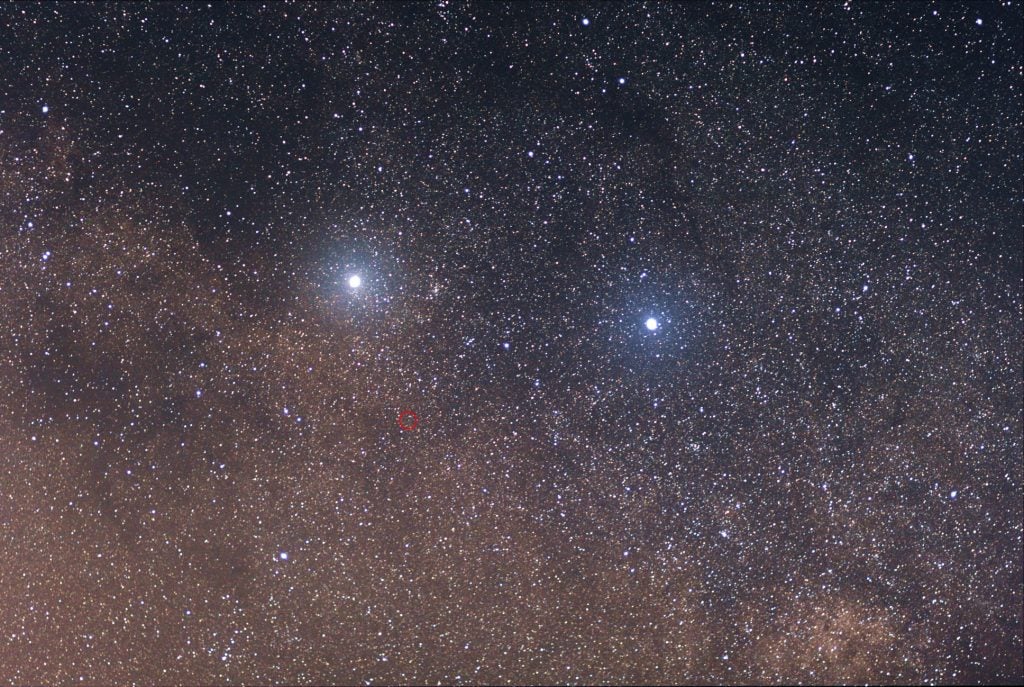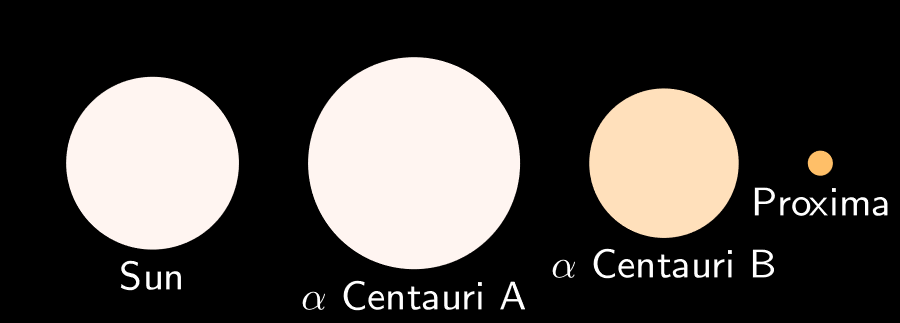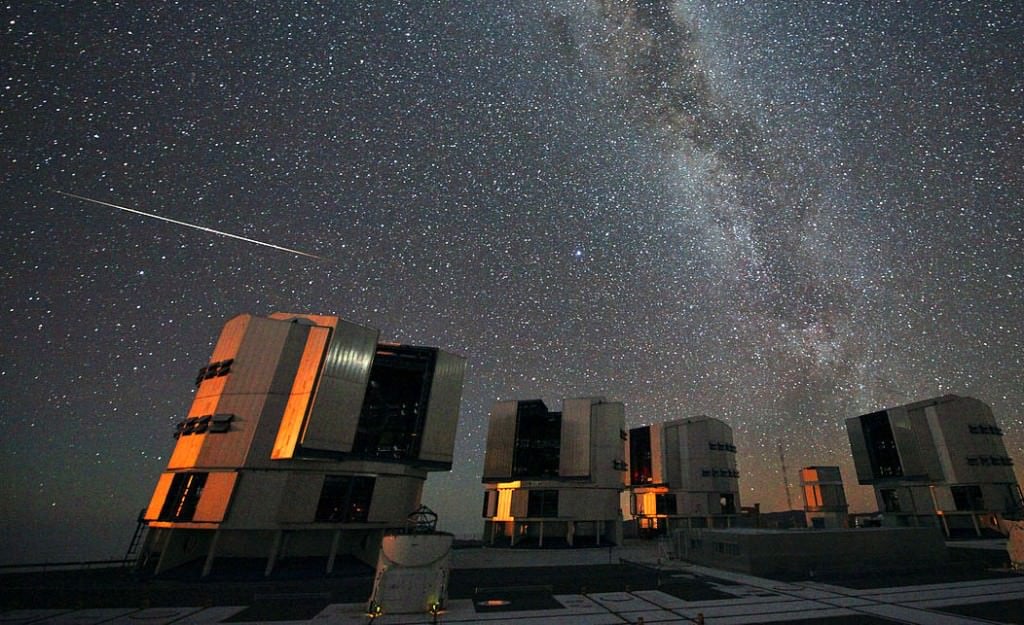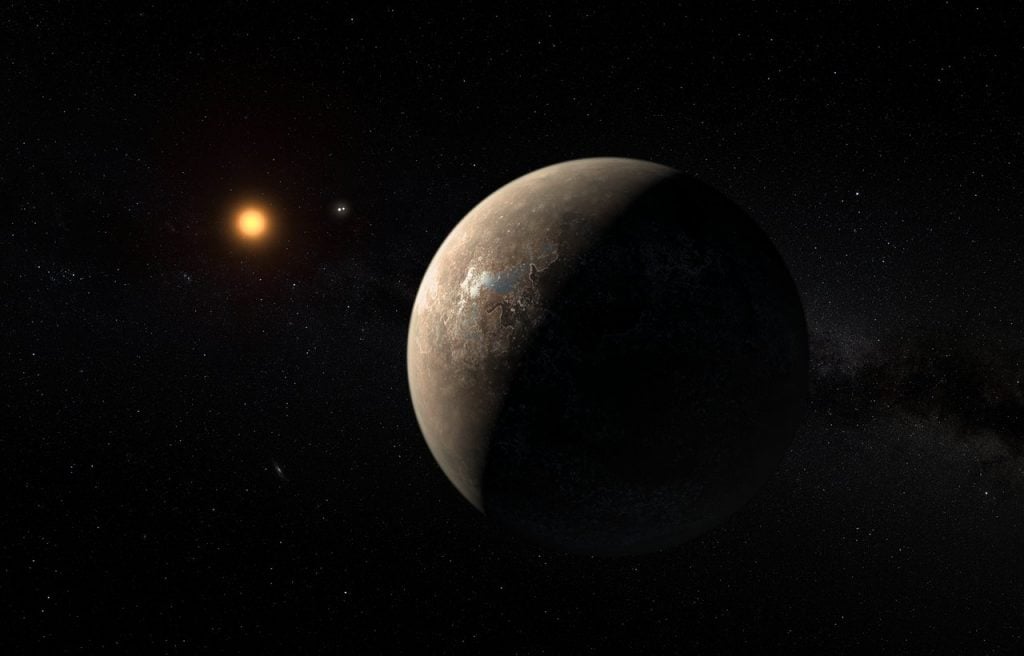Alpha Centauri is the closest star system to us, at 4.37 light-years (about 25 trillion miles) away. In 2016, astronomers discovered an exoplanet orbiting one of the three stars in the Alpha Centauri system. Spurred on by that discovery, the European Southern Observatory (ESO) has developed a new instrument to find any other planets that might be in the Alpha Centauri system, and it's busy looking right now.
There are three stars in the Alpha Centauri system. Two of them are stars similar to our very own Sun, and one is a small, faint, red dwarf.
Alpha Centauri A and B are the Sun-like members in the system, and they're a binary pair sometimes called Alpha Centauri AB. To the naked eye, they appear as one. Alpha Centauri C is tiny and dim and can't be seen with the naked eye. (It's also known as Proxima Centauri.)
In 2016, astronomers with the ESO announced the discovery of a planet in the system. The exoplanet orbits tiny Proxima Centauri and is called Proxima b. Proxima b is similar to Earth in both size and mass and there are indications that it might be a suitable place for liquid water to exist on the surface.
The discovery of Proxima b spurred the ESO to study the Alpha Centauri system closer, in case there were other planets. It also triggered the interest of the Breakthrough Watch, a program funded by Isreali-Russian billionaire and his wife Julia. The over-arching goal of Breakthrough is to find Earth-like planets in star systems near to Earth, and maybe, one day in the distant future, send probes.
"If there are Earth-like planets around Alpha Centauri A and B, that’s huge news for everyone on our planet.”Pete Worden, Executive Director, Breakthrough Initiatives.
The ESO partnered with Breakthrough to build a new instrument on the Very Large Telescope (VLT) called NEAR, or Near Earths in the AlphaCen Region. NEAR is a thermal infrared coronograph, which allows astronomers to find the planets orbiting near the stars in the Alpha Centauri system. The light from stars is so bright that it drowns out any reflected light signal from the planets, and NEAR is a tool to overcome that obstacle. By blocking out the light from the star itself, it makes planets detectable. It's like creating an artificial solar eclipse.
Pete Worden, Executive Director of the Breakthrough Initiatives, said: "We're delighted to collaborate with the ESO in designing, building, installing and now using this innovative new instrument. If there are Earth-like planets around Alpha Centauri A and B, that's huge news for everyone on our planet."
On May 23rd, astronomers at the ESO's VLT started an observing run that wraps up today, June 11th. The goal is to establish the presence, or lack thereof, of planets in the Alpha Centauri system. NEAR will allow the detection of planets that are about twice Earth size or larger.
The nature of the Alpha Centauri system make this a challenging task. We know that there is at least one planet, Proxima Centauri b, in the system. It's orbiting the red dwarf. But the other two stars are a different scenario.
"Fingers crossed-we are hoping a large habitable planet is orbiting Alpha Cen A or B."Olivier Guyon, Lead Scientist, Breakthrough Watch.
Alpha Centauri AB is a binary system, of course, and it's not clear what happens to planets with binary stars, or planets even can orbit them. Astronomers simply don't know if binary stars are gravitationally stable enough environments for planets to orbit. But our best bet is to observe them with instruments like NEAR and let the results speak for themselves.
The VLT is actually four separate 8-meter telescopes. NEAR is attached to one of them, as part of another instrument called VLT Imager and Spectrometer for mid-Infrared (VISIR.) VISIR was installed in 2004, and the addition of NEAR gives VISIR the power of a coronagraph.
NEAR and VISIR should allow astronomers to detect potentially habitable exoplanets in the Alpha Centauri system. Planets absorb the light from their star and emit it in infrared. By narrowing in on this infrared wavelength, rocky planets similar to Earth should be detectable.
"NEAR is the first and (currently) only project that could directly image a habitable exoplanet. It marks an important milestone. Fingers crossed-we are hoping a large habitable planet is orbiting Alpha Cen A or B," commented Olivier Guyon, lead scientist for Breakthrough Watch.
Sources:
- Press Release: Breakthrough Watch and the European Southern Observatory achieve “first light” on upgraded planet-finding instrument to search for Earth-like planets in nearest star system
- Breakthrough Initiatives
- Breakthrough Watch
- VISIR
- Universe Today: Potentially Habitable Exoplanet Confirmed Around Nearest Star!
 Universe Today
Universe Today





